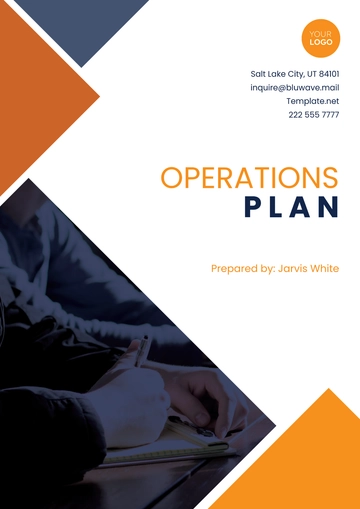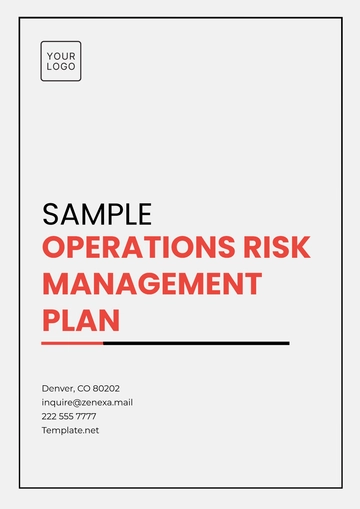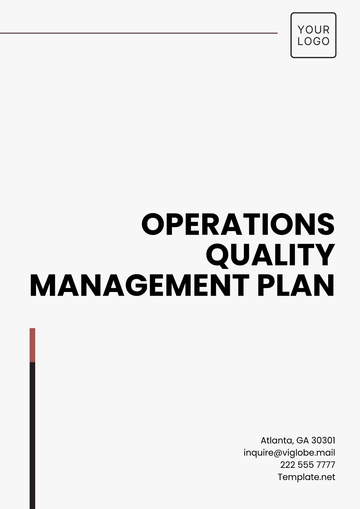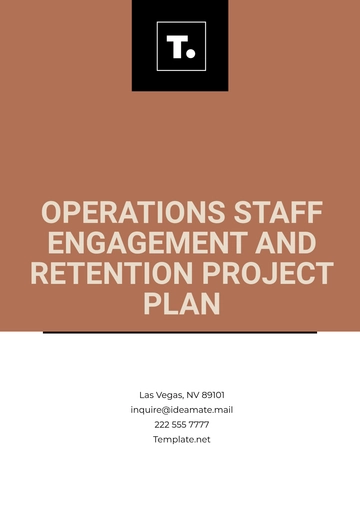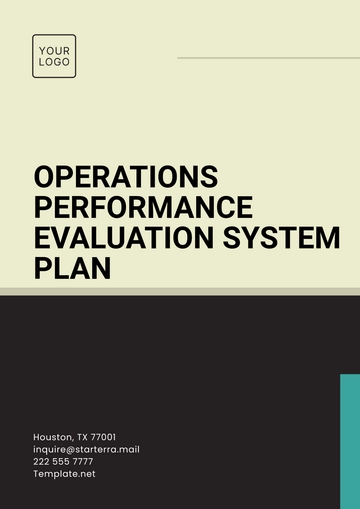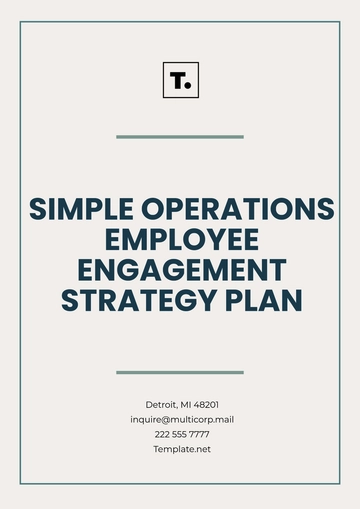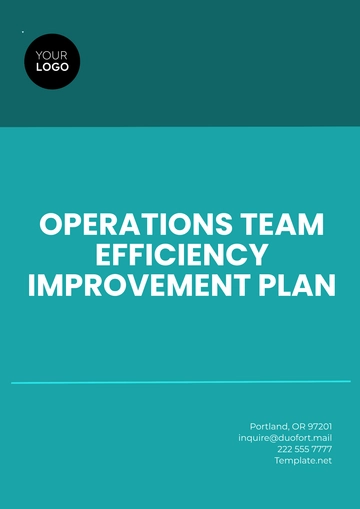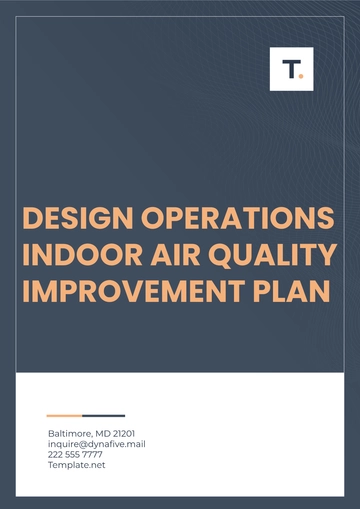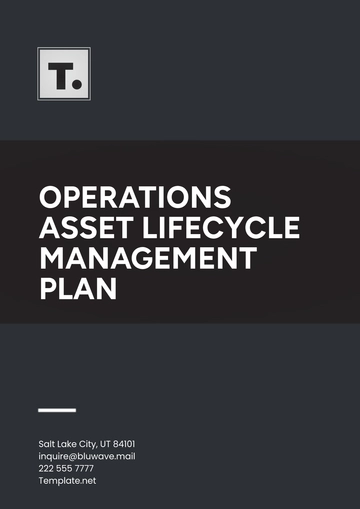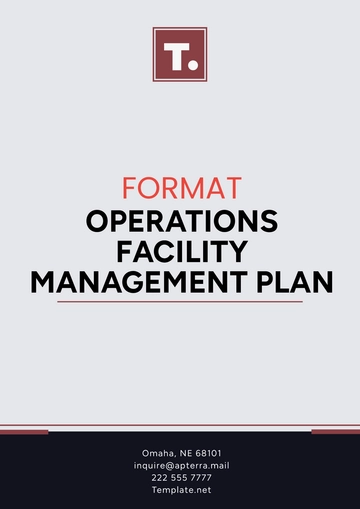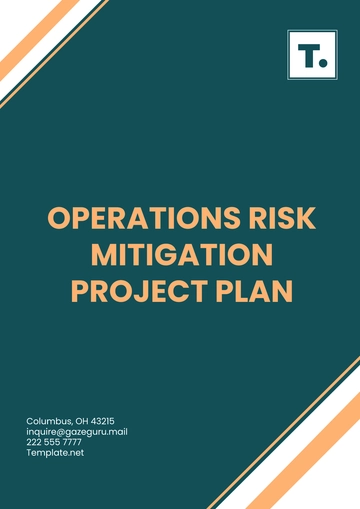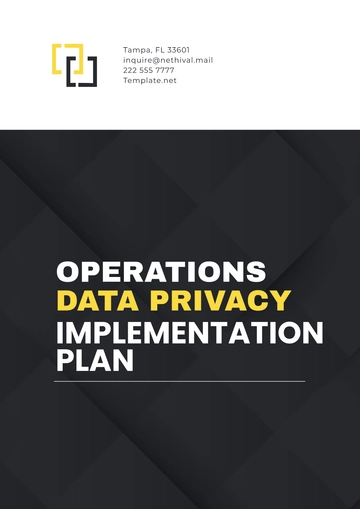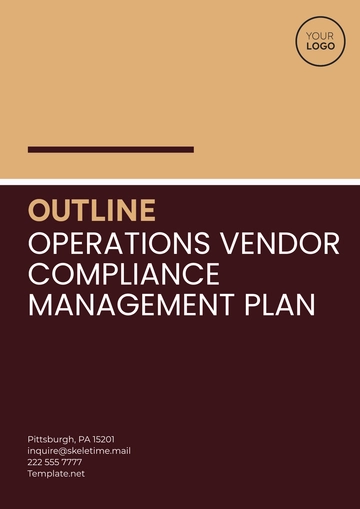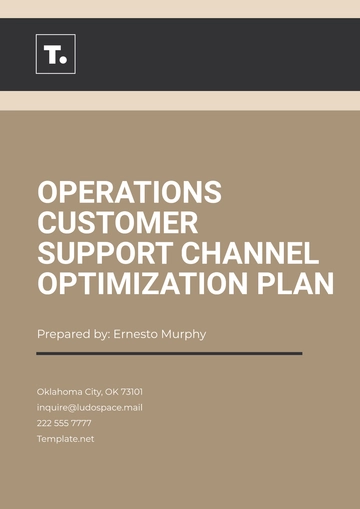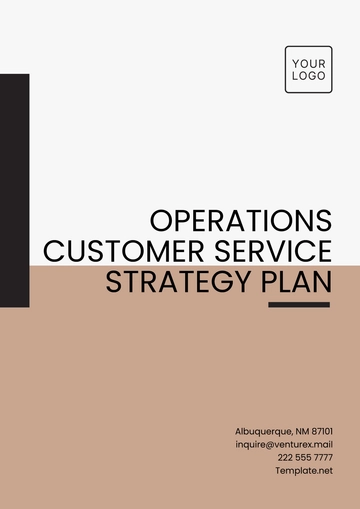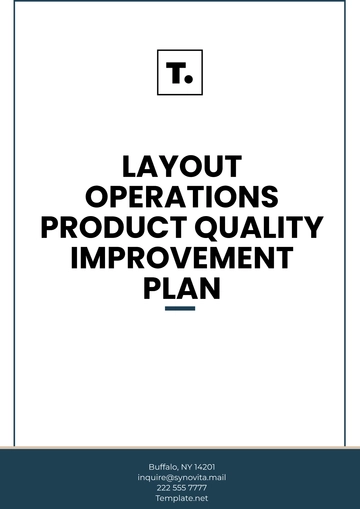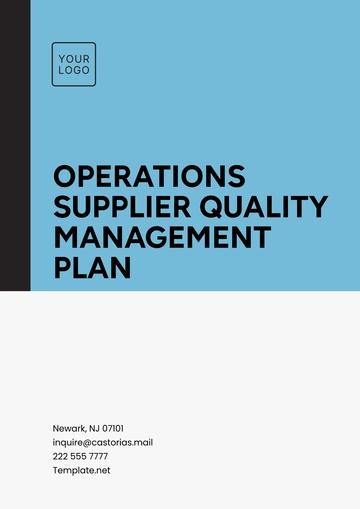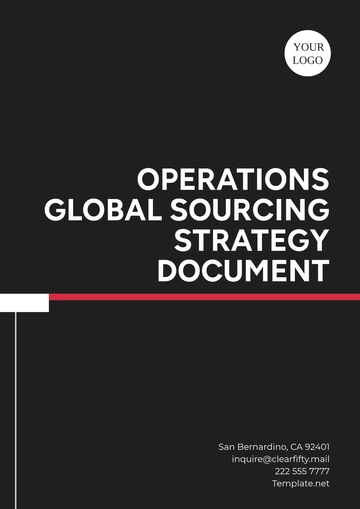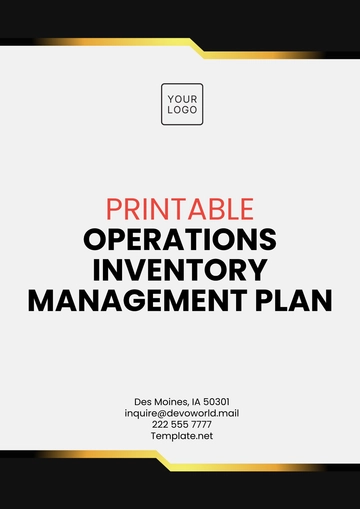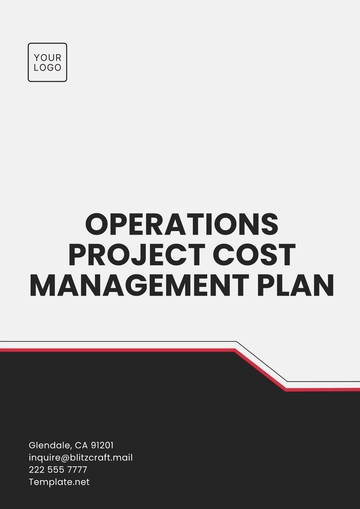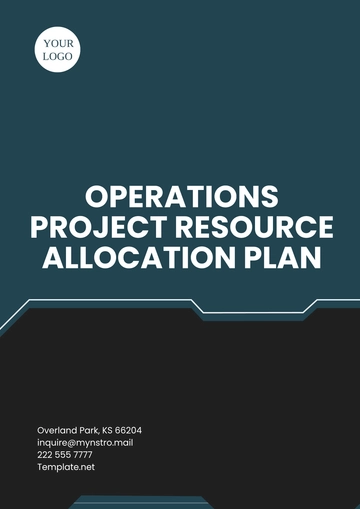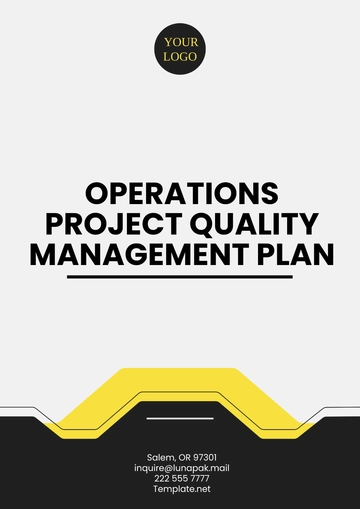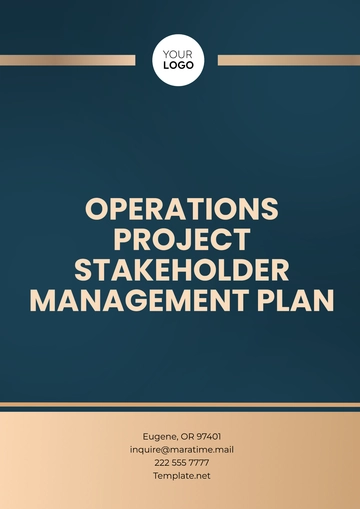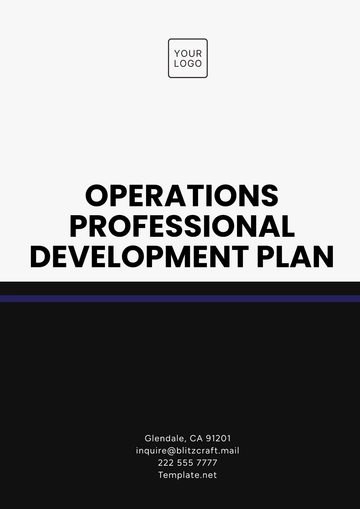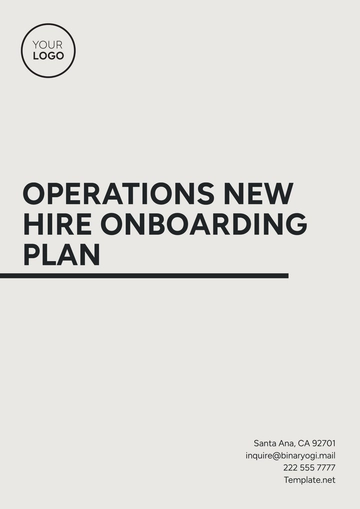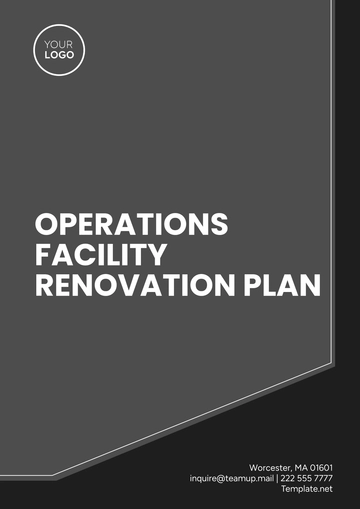Free Car Rental Operations Plan

I. Executive Summary
[Your Company Name] aims to provide convenient, reliable, and affordable transportation solutions. Our operations plan outlines the essential components necessary to achieve operational excellence, customer satisfaction, and sustainable growth. This plan covers facility management, fleet acquisition and maintenance, customer service, marketing, and financial management.
II. Facility Management
Our facilities are the backbone of our operations, providing the infrastructure necessary to serve our customers effectively. This section details the management of our rental locations, including branch offices and vehicle storage areas.
A. Branch Offices
Each branch office will be strategically located in high-traffic areas such as airports, city centers, and popular tourist destinations. Our offices will be designed to ensure a seamless customer experience, from check-in to vehicle return.
Strategic Locations: Each branch office will be strategically located in high-traffic areas such as airports, city centers, and popular tourist destinations. This maximizes visibility and convenience for customers.
Customer Experience: Offices will be designed to ensure a seamless customer experience, from check-in to vehicle return, including streamlined processes and comfortable waiting areas.
Technology Integration: Utilize advanced technology for efficient operations, including automated check-in/check-out systems and real-time inventory management.
B. Vehicle Storage and Maintenance Facilities
We will establish vehicle storage and maintenance facilities in proximity to our branch offices to ensure quick turnaround times for vehicle servicing and availability. These facilities will be equipped with state-of-the-art maintenance equipment to handle routine servicing, repairs, and cleaning.
Proximity to Branches: Storage and maintenance facilities will be located near branch offices to facilitate quick turnaround times and efficient logistics.
State-of-the-Art Equipment: Equip facilities with the latest maintenance tools and technologies to handle routine servicing, repairs, and cleaning efficiently.
Environmental Considerations: Implement environmentally friendly practices in all facilities, such as recycling programs and energy-efficient operations.
III. Fleet Acquisition and Maintenance
A robust fleet is essential for meeting diverse customer needs and ensuring the reliability of our services. This section outlines our strategies for fleet acquisition, management, and maintenance.
A. Fleet Acquisition
We will maintain a diverse fleet of vehicles to cater to various customer preferences and requirements, including economy cars, luxury vehicles, SUVs, and vans. Fleet acquisition will be based on market demand, with an emphasis on fuel efficiency and sustainability. We will negotiate with multiple suppliers to secure favorable terms and maintain a cost-effective inventory.
Diverse Inventory: Maintain a diverse fleet of vehicles, including economy cars, luxury vehicles, SUVs, and vans, to cater to various customer preferences and requirements.
Market Demand: Base fleet acquisition on market demand, focusing on popular models and trends, such as electric and hybrid vehicles.
Supplier Negotiations: Negotiate with multiple suppliers to secure favorable terms, ensuring a cost-effective and up-to-date inventory.
B. Fleet Maintenance
Regular maintenance is critical to ensuring the safety and reliability of our vehicles. We will implement a comprehensive maintenance schedule, including daily inspections, routine servicing, and immediate repairs as needed. Our maintenance team will be trained to adhere to the highest industry standards.
Maintenance Activity | Frequency | Description | Responsibility |
|---|---|---|---|
Daily Inspections | Daily | Check fluid levels, tire pressure, and overall vehicle condition. | Maintenance Staff |
Routine Servicing | Every 5,000 miles | Oil changes, tire rotations, brake inspections, and fluid refills. | Certified Technicians |
Safety Inspections | Monthly | Comprehensive check of safety systems, including airbags, seatbelts, and lights. | Safety Officers |
Deep Cleaning | Bi-Monthly | Thorough interior and exterior cleaning, including upholstery and undercarriage. | Cleaning Crew |
Major Service | Every 15,000 miles | Replace filters, inspect suspension, and check engine diagnostics. | Senior Technicians |
Seasonal Checks | Bi-Annually | Prepare vehicles for seasonal conditions, such as winterization or summer readiness. | Maintenance Supervisors |
Emergency Repairs | As Needed | Immediate attention to any reported issues or breakdowns. | Rapid Response Team |
Efficiency and Safety: Daily inspections help identify minor issues before they become significant problems, reducing downtime and repair costs. Routine servicing at every [5,000] miles maintains vehicle performance and prolongs the life of our fleet.
Cost Management: Regular maintenance reduces the likelihood of major repairs, which can be costly and time-consuming. Seasonal checks and deep cleaning also contribute to maintaining the value of our vehicles, ensuring they remain in good condition for longer periods.
Customer Satisfaction: Well-maintained vehicles are more reliable and provide a better driving experience, leading to higher customer satisfaction and repeat business. Safety inspections and emergency repairs ensure that our customers are always driving vehicles that meet the highest safety standards.
Staff Utilization: Clearly defined responsibilities ensure that maintenance activities are efficiently distributed among the maintenance staff, certified technicians, safety officers, cleaning crew, senior technicians, and the rapid response team.
IV. Customer Service
Exceptional customer service is a cornerstone of our business. This section details our approach to ensuring a superior customer experience, from the moment a customer engages with us to the return of the rental vehicle.
A. Customer Engagement
Our customer service strategy will include multiple touchpoints, including online booking, phone support, and in-person assistance. We will invest in user-friendly technology to streamline the booking process and provide customers with real-time information about vehicle availability and rental terms.
Multiple Touchpoints: Offer multiple customer engagement channels, including online booking, phone support, and in-person assistance.
User-Friendly Technology: Invest in intuitive technology to streamline the booking process and provide real-time information about vehicle availability and rental terms.
Personalized Service: Tailor customer interactions based on individual preferences and feedback to enhance satisfaction and loyalty.
B. Training and Development
Our staff will undergo rigorous training programs focused on customer service excellence, problem-solving, and effective communication. Regular workshops and feedback sessions will ensure our team remains motivated and equipped to exceed customer expectations.
Rigorous Training Programs: Implement comprehensive training programs focused on customer service excellence, problem-solving, and effective communication.
Regular Workshops: Conduct regular workshops and feedback sessions to keep staff motivated and updated on best practices.
Performance Metrics: Use performance metrics and customer feedback to continuously improve service quality.
V. Marketing and Sales
Effective marketing and sales strategies are vital for attracting and retaining customers. This section outlines our approach to promoting our services and driving business growth.
A. Marketing Strategy
Our marketing efforts will focus on digital and traditional channels to maximize reach. We will utilize search engine optimization (SEO), social media marketing, email campaigns, and partnerships with travel agencies and local businesses. Special promotions and loyalty programs will be implemented to encourage repeat business.
Digital Marketing: Utilize SEO, social media marketing, email campaigns, and online advertising to reach a broad audience.
Traditional Marketing: Incorporate traditional marketing channels such as print ads, billboards, and partnerships with local businesses and travel agencies.
Promotions and Loyalty Programs: Implement special promotions, discounts, and loyalty programs to encourage repeat business and attract new customers.
B. Sales Strategy
We will employ a data-driven sales approach, using customer insights and market trends to tailor our offerings. Our sales team will work closely with corporate clients, travel agencies, and event organizers to secure bulk rentals and long-term contracts.
Data-Driven Approach: Use customer insights and market trends to tailor our offerings and improve sales strategies.
Corporate Partnerships: Develop relationships with corporate clients, travel agencies, and event organizers to secure bulk rentals and long-term contracts.
Customer Retention: Focus on customer retention through exceptional service, personalized offers, and continuous engagement.
VI. Financial Management
Sound financial management is essential for the sustainability and growth of our business. This section covers our financial planning, budgeting, and risk management strategies.
A. Financial Planning and Budgeting
Sound financial planning and budgeting are essential for the sustainability and growth of [Your Company Name]. This section outlines our financial planning and budgeting strategies, focusing on cost management, revenue projections, and financial stability.
Budget Category | Estimated Annual Budget | Responsible Department |
|---|---|---|
Fleet Acquisition | $5,000,000 | Procurement Department |
Maintenance and Repairs | $1,200,000 | Maintenance Department |
Facility Management | $800,000 | Operations Department |
Marketing and Advertising | $600,000 | Marketing Department |
Salaries and Wages | $3,500,000 | Human Resources |
Insurance | $400,000 | Finance Department |
Technology and IT Support | $300,000 | IT Department |
Administrative Expenses | $200,000 | Administration Department |
Contingency Fund | $500,000 | Finance Department |
Comprehensive Coverage: The budget categories cover all critical areas of the business, ensuring that each department has the necessary resources to operate efficiently. This comprehensive approach helps prevent underfunding in any area, which could disrupt operations.
Fleet Investment: The largest portion of the budget is allocated to fleet acquisition, highlighting the importance of maintaining a modern and diverse fleet to meet customer demand. Investing in new vehicles ensures that our fleet remains competitive and appealing to customers.
Employee Compensation: A significant allocation for salaries and wages reflects our commitment to attracting and retaining skilled employees. Competitive compensation packages are essential for maintaining high levels of employee satisfaction and performance.
Marketing and Growth: A robust marketing and advertising budget demonstrates our focus on growth and customer acquisition. Effective marketing strategies are crucial for increasing brand awareness and driving business expansion.
Risk Management: The inclusion of a contingency fund ensures that we are prepared for unexpected expenses or emergencies. This prudent financial planning helps safeguard the company's stability and continuity.
Technology Investment: Allocating funds for technology and IT support underscores the importance of leveraging technology to improve efficiency, customer service, and operational management. This investment is critical for maintaining a competitive edge in the industry.
B. Risk Management
We will implement comprehensive risk management policies to mitigate potential financial, operational, and reputational risks. This includes maintaining adequate insurance coverage, diversifying revenue streams, and establishing contingency plans for unforeseen circumstances.
Comprehensive Policies: Establish comprehensive risk management policies to mitigate financial, operational, and reputational risks.
Insurance Coverage: Maintain adequate insurance coverage to protect against potential liabilities and unforeseen events.
Contingency Plans: Develop contingency plans to address potential disruptions, ensuring business continuity.
VII. Conclusion
The operations plan for [Your Company Name] is designed to ensure efficient, customer-centric, and financially sustainable operations. By focusing on facility management, fleet acquisition and maintenance, customer service, marketing, and financial management, we aim to become a leading car rental service provider, recognized for quality and reliability.
- 100% Customizable, free editor
- Access 1 Million+ Templates, photo’s & graphics
- Download or share as a template
- Click and replace photos, graphics, text, backgrounds
- Resize, crop, AI write & more
- Access advanced editor
Streamline your operations with the Car Rental Operations Plan Template, available exclusively on Template.net. This editable and customizable template, fully compatible with our Ai Editor Tool. The template ensures that your operational processes are well-documented and aligned with your business goals, promoting efficiency and consistency across all departments.
You may also like
- Finance Plan
- Construction Plan
- Sales Plan
- Development Plan
- Career Plan
- Budget Plan
- HR Plan
- Education Plan
- Transition Plan
- Work Plan
- Training Plan
- Communication Plan
- Operation Plan
- Health And Safety Plan
- Strategy Plan
- Professional Development Plan
- Advertising Plan
- Risk Management Plan
- Restaurant Plan
- School Plan
- Nursing Home Patient Care Plan
- Nursing Care Plan
- Plan Event
- Startup Plan
- Social Media Plan
- Staffing Plan
- Annual Plan
- Content Plan
- Payment Plan
- Implementation Plan
- Hotel Plan
- Workout Plan
- Accounting Plan
- Campaign Plan
- Essay Plan
- 30 60 90 Day Plan
- Research Plan
- Recruitment Plan
- 90 Day Plan
- Quarterly Plan
- Emergency Plan
- 5 Year Plan
- Gym Plan
- Personal Plan
- IT and Software Plan
- Treatment Plan
- Real Estate Plan
- Law Firm Plan
- Healthcare Plan
- Improvement Plan
- Media Plan
- 5 Year Business Plan
- Learning Plan
- Marketing Campaign Plan
- Travel Agency Plan
- Cleaning Services Plan
- Interior Design Plan
- Performance Plan
- PR Plan
- Birth Plan
- Life Plan
- SEO Plan
- Disaster Recovery Plan
- Continuity Plan
- Launch Plan
- Legal Plan
- Behavior Plan
- Performance Improvement Plan
- Salon Plan
- Security Plan
- Security Management Plan
- Employee Development Plan
- Quality Plan
- Service Improvement Plan
- Growth Plan
- Incident Response Plan
- Basketball Plan
- Emergency Action Plan
- Product Launch Plan
- Spa Plan
- Employee Training Plan
- Data Analysis Plan
- Employee Action Plan
- Territory Plan
- Audit Plan
- Classroom Plan
- Activity Plan
- Parenting Plan
- Care Plan
- Project Execution Plan
- Exercise Plan
- Internship Plan
- Software Development Plan
- Continuous Improvement Plan
- Leave Plan
- 90 Day Sales Plan
- Advertising Agency Plan
- Employee Transition Plan
- Smart Action Plan
- Workplace Safety Plan
- Behavior Change Plan
- Contingency Plan
- Continuity of Operations Plan
- Health Plan
- Quality Control Plan
- Self Plan
- Sports Development Plan
- Change Management Plan
- Ecommerce Plan
- Personal Financial Plan
- Process Improvement Plan
- 30-60-90 Day Sales Plan
- Crisis Management Plan
- Engagement Plan
- Execution Plan
- Pandemic Plan
- Quality Assurance Plan
- Service Continuity Plan
- Agile Project Plan
- Fundraising Plan
- Job Transition Plan
- Asset Maintenance Plan
- Maintenance Plan
- Software Test Plan
- Staff Training and Development Plan
- 3 Year Plan
- Brand Activation Plan
- Release Plan
- Resource Plan
- Risk Mitigation Plan
- Teacher Plan
- 30 60 90 Day Plan for New Manager
- Food Safety Plan
- Food Truck Plan
- Hiring Plan
- Quality Management Plan
- Wellness Plan
- Behavior Intervention Plan
- Bonus Plan
- Investment Plan
- Maternity Leave Plan
- Pandemic Response Plan
- Succession Planning
- Coaching Plan
- Configuration Management Plan
- Remote Work Plan
- Self Care Plan
- Teaching Plan
- 100-Day Plan
- HACCP Plan
- Student Plan
- Sustainability Plan
- 30 60 90 Day Plan for Interview
- Access Plan
- Site Specific Safety Plan
